The Monkey
‘The Monkey’ poker playing cards manufactured by M.C. de Casabó Ltda, Uruguay, c.1950.
‘The Monkey’ playing cards by M.C. de Casabó Ltda, c.1950
‘The Monkey’ poker playing cards manufactured by M.C. de CASABÓ Ltda, Avda Gral Rondeau 1602, Montevideo, c.1950. The court cards are a curious idiosyncratic design with indices in a smaller font size than in the numeral cards. The ace of hearts has the blue 25 centésimo tax stamp which was applied to cards manufactured in Uruguay at this time. Casabó also produced Naipes Conga, Naipes Elefante, Naipes Bambú, Naipes Tatú, Naipes King, Naipes American and Naipes Jaque►
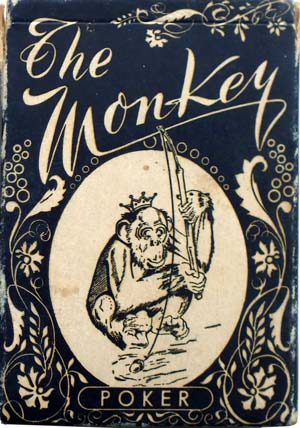
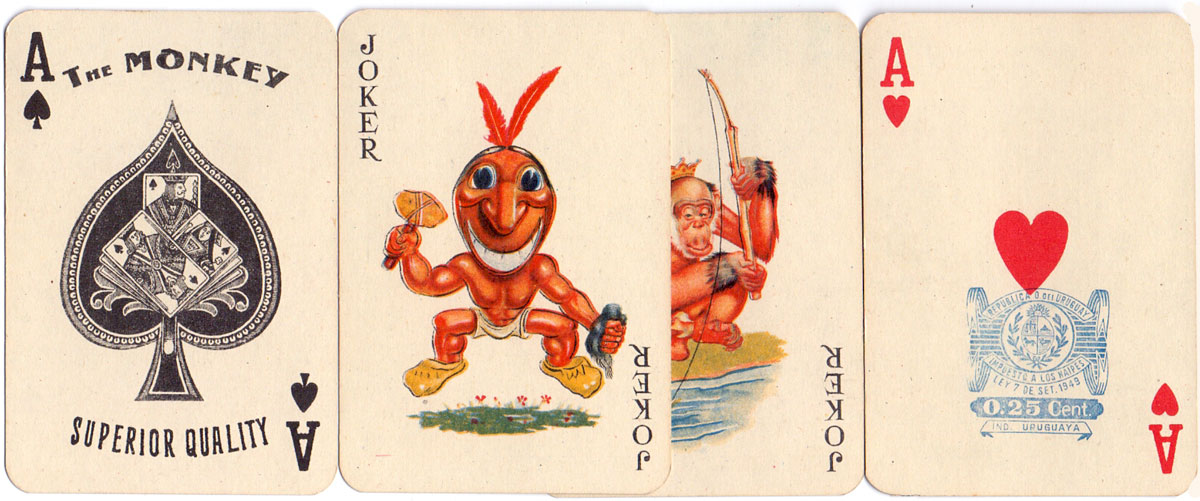
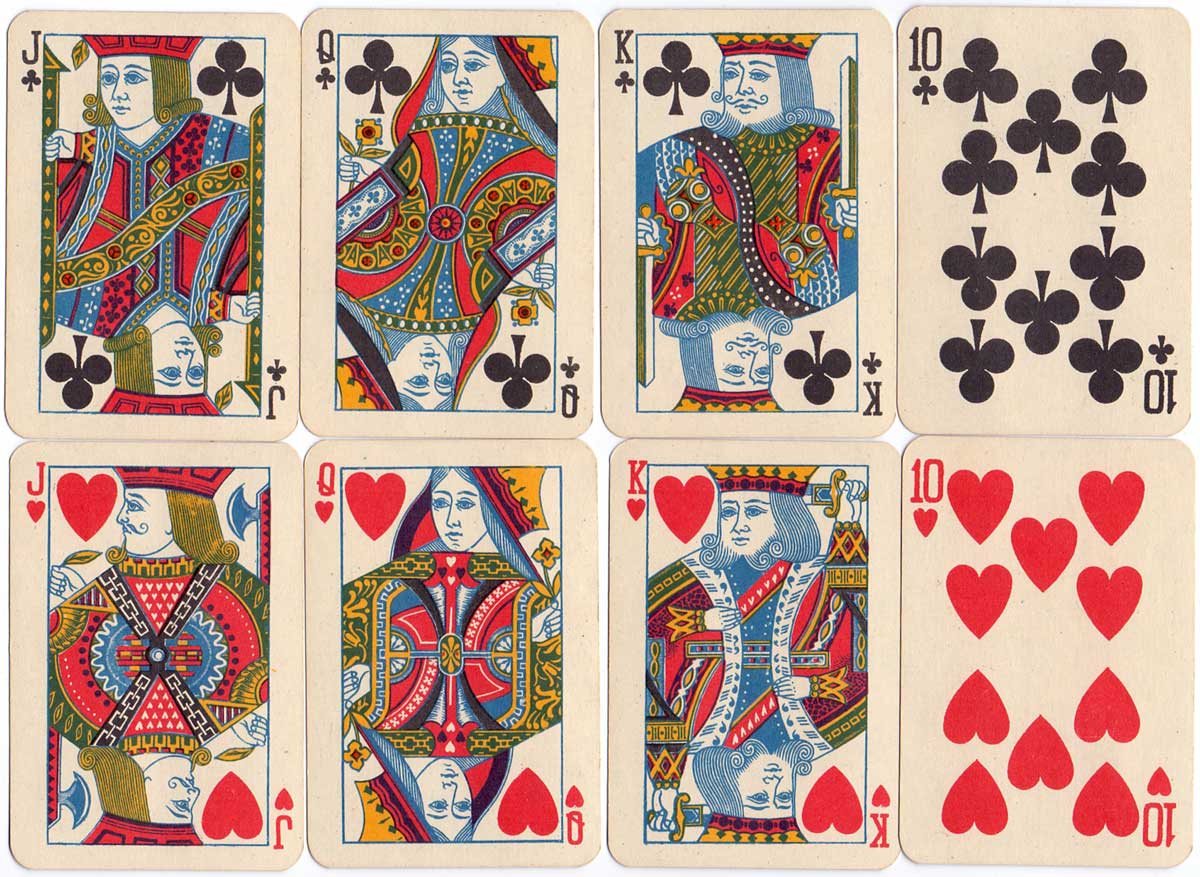
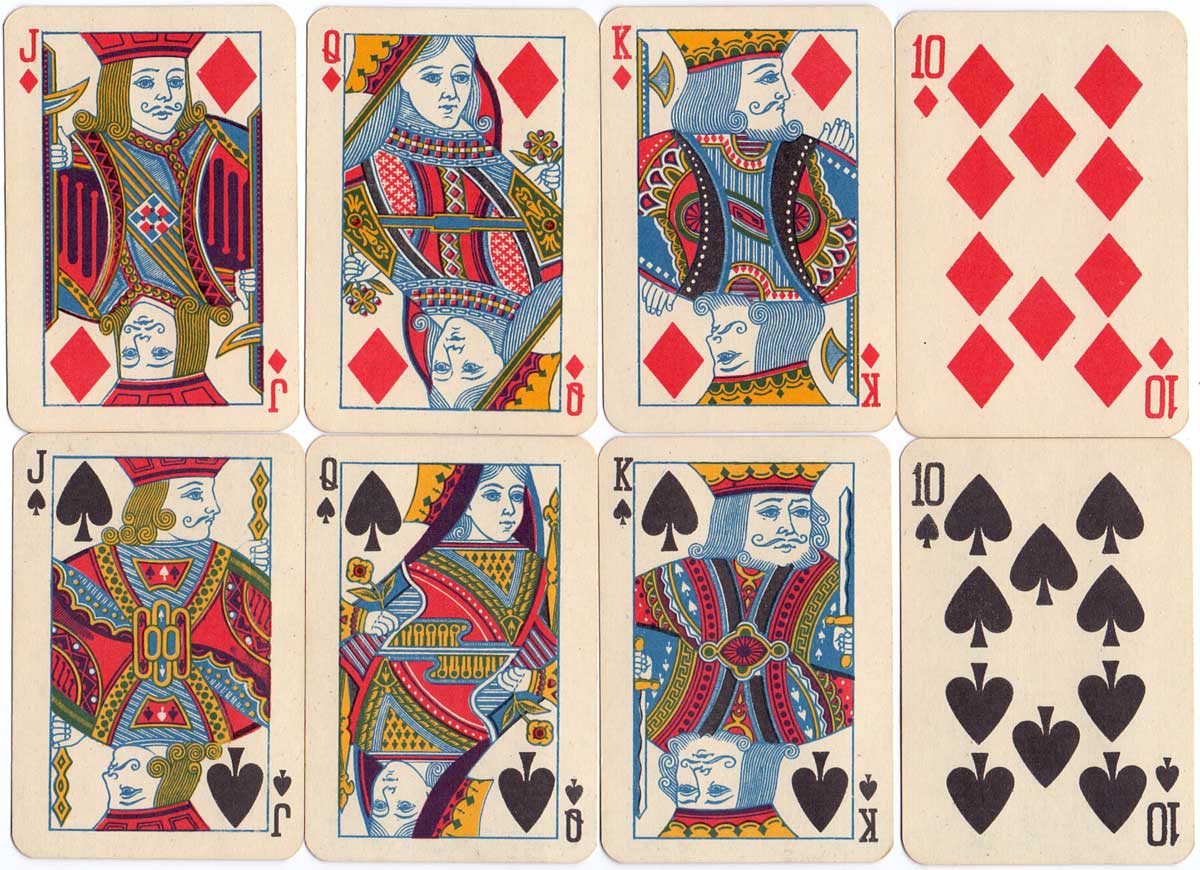
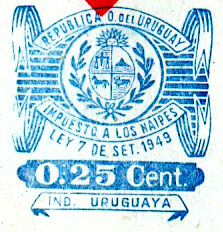
Above: in this edition the court cards have not all been turned so that the suit symbol is at the left-hand side which would make it easier to fan the cards in the hand. In later editions the courts are all turned. Two new joker designs have been added. The box gives the company name as M. C. de Casabó Ltda, and the address as Av. Gral Rondeau, 1602 (Montevideo) and a telephone number. In May 1956 the name changed to M. C. de Casabó S.A. and the address to Cuareim 1885 (Montevideo) with the same telephone number.
Right: the tax stamp on the ace of hearts→
By Simon Wintle
Spain • Member since February 01, 1996 • Contact
I am the founder of The World of Playing Cards (est. 1996), a website dedicated to the history, artistry and cultural significance of playing cards and tarot. Over the years I have researched various areas of the subject, acquired and traded collections and contributed as a committee member of the IPCS and graphics editor of The Playing-Card journal. Having lived in Chile, England, Wales, and now Spain, these experiences have shaped my work and passion for playing cards. Amongst my achievements is producing a limited-edition replica of a 17th-century English pack using woodblocks and stencils—a labour of love. Today, the World of Playing Cards is a global collaborative project, with my son Adam serving as the technical driving force behind its development. His innovative efforts have helped shape the site into the thriving hub it is today. You are warmly invited to become a contributor and share your enthusiasm.

Related Articles
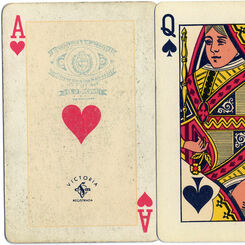
Naipes Victoria
Victoria playing cards manufactured in Uruguay by Compañía General de Fósforos Montevideana, c.1955....

Casinos On The Internet
While card rooms and private gaming clubs may have been around for hundreds of years, the earliest k...

Chocolondo by Famosa
Chocolondo Waffle deck for Famosa.
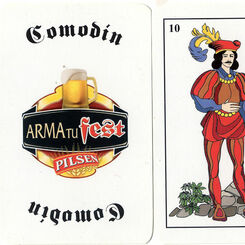
Pilsen Trucofest
Pilsen Trucofest playing cards, Uruguay.
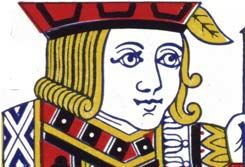
History of Poker
The origin of Poker - arguably the most influential card game of all time - is actually quite unclea...
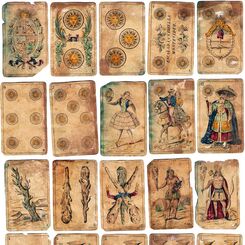
Uruguayan Playing Cards
Until the 19th century playing cards were imported into Uruguay from Spain.
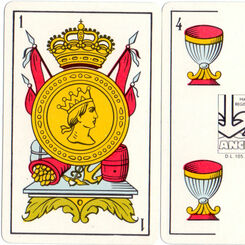
Naipes ‘Ancla’
Naipes opacos ‘Ancla’ manufactured by Cía General de Fósforos Montevideana S.A. c.1980.
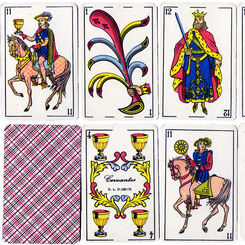
Naipes ‘El Gaucho’ by Cervantes S.A., Montevideo, c.1970s
Naipes ‘El Gaucho’ manufactured and distributed by Cervantes S.A., Montevideo, c.1970s.

Argenar, Buenos Aires, c.1980
The reverse has advertising for Cymaco motor spares who have branches in Uruguay.

History and Evolution of Spades
History and Evolution of Spades
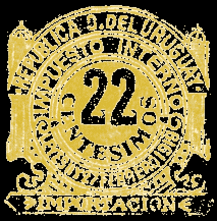
Uruguay playing card tax
In 1806 the Council of Concepción del Uruguay imposed an 8 Peso tax on card and billiard tables on a...
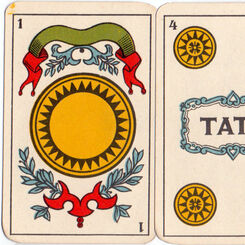
Naipes Tatú
Naipes Tatú, M.C. de Casabó S.A., Montevideo, c.1956
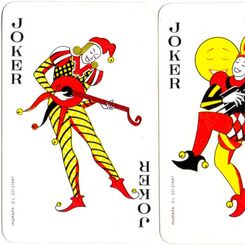
Naipes 210 made by Industria Gráfica Papelera S.A.
Naipes '210' playing cards made in Uruguay by Industria Gráfica Papelera S.A. (Ingrapa), c.1990.

Cía General de Fósforos Montevideana
The design of these Spanish-suited cards is the same Spanish Catalan style as used by their sister c...
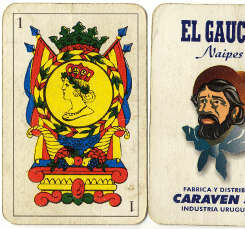
Naipes ‘El Gaucho’
Naipes ‘El Gaucho’ manufactured and distributed by Caraven S.A., Montevideo, Uruguay, c.1990s.
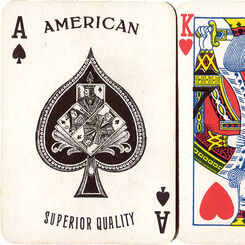
Naipes ‘American’
Naipes ‘American’ by M.C. de CASABÓ Ltda, Montevideo, c.1950.
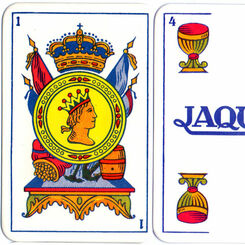
Naipes ‘Jaque’ by Casabó S.A., c.1997
Naipes ‘Jaque’ Catalan pattern manufactured by Casabó S.A. for Laboratorios Gautier, c.1997.
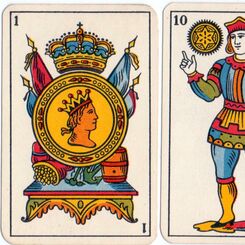
Naipes ‘Bambú’
Naipes ‘Bambú’ manufactured by M.C. de Casabó Ltda, Montevideo, c.1950

Spanish playing cards for Yerba Armiño
Spanish-suited playing cards for Yerba Armiño, anonymous manufacturer probably made in China.

Popular heroes and celebrities
Miniature children's playing cards depicting popular heroes and celebrities on the backs, Montevideo...
Most Popular
Our top articles from the past 60 days






















